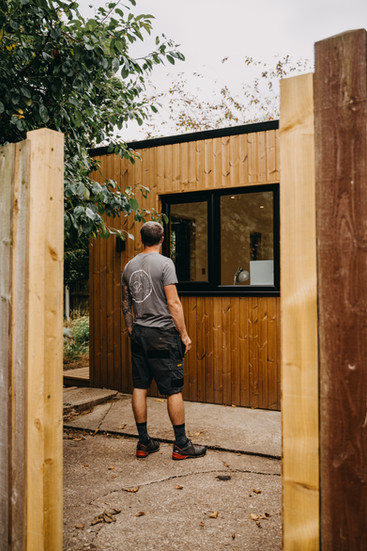Top 5 architecture and design trends in 2025
- Ben Skinner-Watts
- Feb 13
- 3 min read
Updated: Apr 17
As we move further into the 21st century, architecture continues to evolve with a focus on sustainability, wellness, and design innovation. Having discussed and proposed options for customers there are recurrent themes and trends that keep appearing in our conversation for the designs we have already created this year. Here are architectural trends that we think will define the way we live, work, and interact with our built environments.
Sustainability: A Continued Commitment
Sustainability has been a buzzword in architecture for years, but in 2025, it will become even more crucial. Building designs will focus on energy-efficient materials, zero-carbon construction, and passive house principles. Expect to see an increase in buildings powered by renewable energy sources like solar panels and wind turbines, as well as structures that are fully integrated with natural ecosystems. From net-zero homes to eco-conscious urban designs, sustainable architecture will be at the forefront of innovation, pushing the limits of green design.
Key Features:
Energy-efficient materials
Water conservation through smart systems
Insulation and conserving energy and heat
Bringing the Outdoors In: Merging Natural and Built Environments
The trend of "bringing the outdoors in" continues to gain traction, especially as more people are spending time in hybrid or remote work settings. In 2025, expect to see even more seamless transitions between the interior and exterior of buildings. Large glass windows, open-plan layouts, and biophilic designs will be popular, allowing nature to flow directly into living spaces. This approach does not just enhance aesthetic appeal but also supports mental health by fostering a deeper connection with nature.
Key Features:
Floor-to-ceiling windows and expansive glass walls
Open, airy floor plans that allow for natural light
Using space in garden to create work environment and offices
3. Art Deco: A Return to Glamour
After a period of minimalism and modern design, the opulent Art Deco style is making a comeback. Bold, geometric patterns, luxurious materials, and rich color schemes will dominate interiors and exteriors in 2025. This revival combines the best of vintage glamour with modern sensibilities, making Art Deco a timeless yet fresh style for both residential and commercial architecture. Expect to see intricate detailing, elegant finishes, and a focus on craftsmanship.
Key Features:
Bold, geometric designs
Luxurious materials like marble and shiny metals
Rich, deep colour palettes
4. Green Roofs and Nature Walls: Bringing Greenery to New Heights
As urbanization continues to grow, integrating nature into the built environment has become more important than ever. Green roofs and nature walls have already been revolutionizing the way we approach city landscapes but are now being adopted in already green areas. These sustainable architectural features not only help with insulation and energy efficiency but also provide much-needed natural design for roofing or wall solutions. In 2025, green roofs and living walls will be seen in both commercial and residential buildings, contributing to cleaner air and healthier environments.
Key Features:
Rooftop gardens that promote biodiversity
Vertical gardens on building facades
Eco-friendly insulation and temperature regulation
5. Scandi Design & Modernism: A Minimalist’s Dream
The enduring popularity of Scandinavian design and modernism is not fading anytime soon. In 2025, this clean, minimalist aesthetic will continue to influence both residential and commercial architecture. Expect simple, functional spaces with a focus on natural light, neutral colours, and high-quality materials. Sustainability will be key in Scandi design, with a preference for materials that are both sustainable and aesthetically pleasing. Think wooden elements, open spaces, and lots of light. Modernism will continue to shine through in its functional, sleek design.
Key Features:
Open, airy spaces with minimal clutter
Use of natural wood, stone, and metals
Focus on natural light and simple, functional furniture
In 2025, architecture will continue to embrace innovation and sustainability, with designs that are both functional and aesthetically pleasing. From art deco’s glamorous revival to the integration of nature within our homes and cities, these trends will shape the way we live, work, and interact with the world around us. Whether you’re designing a new building or renovating an existing space, these trends offer a glimpse into the future of architecture.








































Comments